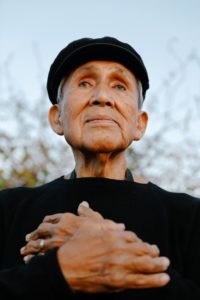The South African town of Hamburg is situated by one of the most beautiful estuaries in the Eastern Cape. Bordered by unspoilt beaches, dune forests and a meandering river, Hamburg, like the rest of the region, is known for its rich Xhosa culture, cattle herding, fishing and homesteads. It’s also home to a group of women who have produced a series of extraordinary artworks that have been exhibited around the world.
Keiskamma Art Project was created to teach local women embroidery skills to help them at a tough time economically and socially, but it has grown into something much bigger. Having been shown at international art galleries, many of their tapestries are now being displayed under one roof for the first time, at an exhibition in Johannesburg.
Their story begins in 2000, when Dr. Carol Hofmeyr moved from Johannesburg to Hamburg. She found a town struggling with high unemployment and a community of women desperate to find ways to feed their families.
Having studied embroidery herself, Dr. Hofmeyr hoped that passing on that knowledge to local women would help empower them. “The initial aim of the project was to use creativity to build confidence and self-esteem not to make money,” she says.
From rudimentary beginnings holding workshops in an old, ruined house, increasing numbers of the women heard about the project through word of mouth. Now, more than 150 women are part of the initiative. Selling their work provides a source of income, but the project has also created a meeting place and support system for the women.
I nitially, the women started out simply creating cushions and small handbags to sell to tourists. Single mother Veronica Nkosasana Betani, 53, has been part of the initiative since its outset. With the money she earns from it, she is now able to care for her children and grandchildren.
Eventually the women started receiving commissions for larger pieces. They were given panels about a meter in size to work on at home. By joining the completed panels together, they created the first of their larger works, and one of their most celebrated, “The Keiskamma Tapestry.” Sewn on wool that was donated to the project, the 120-meter (394 foot)-long work is inspired by the Bayeux Tapestry, made in the 11th Century to commemorate the Norman conquest of England.
“I realized together we could make a monumental work — our first 120-meter tapestry telling the story of our area.” says Dr. Hofmeyr.
While the Bayeux Tapestry gives the perspective of the conquerors, “The Keiskamma Tapestry” tells the story of the Xhosa people who were subjugated through colonization and the Xhosa British Frontier Wars from 1776 to 1876. The piece continues their narrative up to the 1994 elections — South Africa’s first to allow all races to vote.
“It caused a stir when it was shown at The National Arts Festival in 2003 and then won a national art award,” says Dr. Hofmeyr.
It’s one of the huge tapestries on display at the retrospective exhibition “Umaf’ evuka, nje ngenyanga / Dying and rising, as the moon does,” currently showing at Johannesburg’s Constitutional Court of South Africa.
C o-curator Pippa Hetherington says the making of “The Keiskamma Tapestry” was a cathartic moment for South Africa. “It depicts a dark time, where the Xhosa people became decimated. Having killed their cattle in a bid to drive the White settlers away, they were left in extreme poverty and had to go and beg for work from the White settlers,” says Hetherington. “This was then followed by Apartheid.”
The piece has traveled to art galleries around the world, as well as European cathedrals. It was bought by Standard Bank, which later loaned it to the Cape Town parliament building, where it was nearly consumed by a fire in January 2021.
Another celebrated piece is “The Keiskamma Altarpiece,” which was produced by 130 women. Fashioned after the “Isenheim Altarpiece” (1512-1516), painted by German Renaissance artist Matthias Grünewald, the four meter-high, four meter-wide piece reveals the struggles that elderly women endured when the youth in their community were hit by HIV two decades ago, and grandparents stepped in to care for children.
T he retrospective is also the first time the “Women’s Charter Tapestries,” completed in 2016 as a celebration of femininity, have been publicly exhibited. They are shown alongside the “Democracy Tapestries,” created between 2003 and 2004.
Raw and provocative, the pieces address some of the country’s darkest times. Among the “Democracy Tapestries” is a piece inspired by Picasso’s 1937 painting “Guernica.” More than three meters (10 feet) high and nearly eight meters (26 feet) wide, the “Keiskamma Guernica” tells the tragic narrative of life and death at the height of South Africa’s HIV epidemic.
“We made that piece to scream at the system and commemorate the people,” says Dr. Hofmayer.
Recent artworks engage with contemporary issues. “Covid Resilience Tapestry” deals with the pandemic, while “A New Earth,” and “Our Sacred Ocean” are a call for environmental consciousness.
N ow recognized for their artistic value and cultural importance, the tapestries are testimony to the community’s talent and resilience.
“For me there is no other path. I want to keep Kieskamma going because it’s a place that helps women to keep going,” says Betani.
For Dr. Hofmeyer, there is still work to done. She hopes the project “will continue to work for the good of the community and eventually give this marginalized rural community a voice.”
© 2023 Cable News Network, Inc. A WarnerMedia Company. All Rights Reserved.




